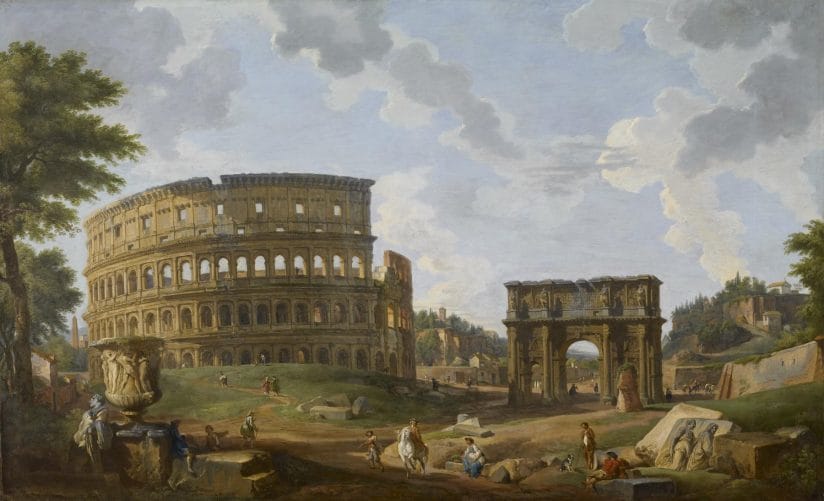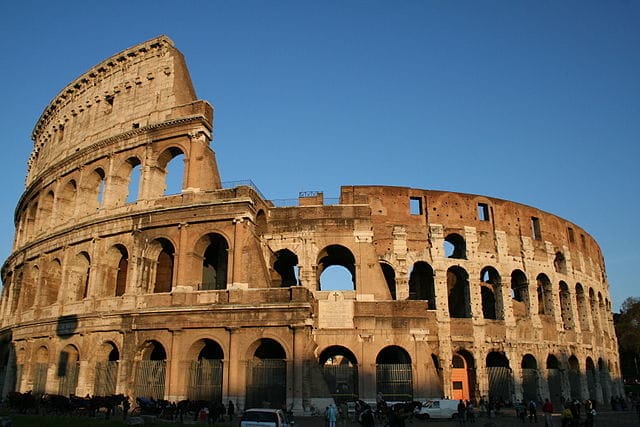コロッセウム Colosseum (コロッセオ Colosseo 伊)
剣闘士の試合などがおこなわれたローマ市にある円形闘技場。ネロ帝の巨像(コロスス)が近くにあるため、こう呼ばれるようになった。外観は4層のアーチで、4万人が収容できた。
コロッセウム
剣闘士の試合などがおこなわれたローマ市にある円形闘技場。ネロ帝の巨像(コロスス)が近くにあるため、こう呼ばれるようになった。外観は4層のアーチで、4万人が収容できた。
世界遺産
世界遺産「ローマの歴史地区と教皇領、サン・パオロ・フォーリ・レ・ムーラ聖堂」に登録された建造物のひとつ。80年にティトゥス帝が建築。当時はフラウイウスの闘技場と呼ばれていた。コロッセオは長径が188m、短径が156mの楕円形。高さは48.5mの4層構造。収容人数は5万人とも6万人以上ともいわれている。ローマ帝国時代、ここでは血をすわせるため白い砂が撒かれその上で剣闘士同士や、剣闘士と猛獣の戦いが見世物として行われた。時には水を張って模擬海戦も行われたという。現在は、地上部分が露出している。
コロッセウムが登場する作品
クォ・ヴァディス
グラディエーター
ベン・ハー
関連する絵画
This view of the Colosseum and the Arch of Constantine is a somewhat fanciful reconstruction showing each monument from its best side. Fallen walls of the Colosseum have been tidied up, and several other works of antiquity have been introduced into the landscapes, such as the famous Borghese vase (now in the Louvre Museum, Paris) at the left. Roman ruins had become popular subjects by the 1700s, in part due to the new interest in archaeology. Panini was a master of these souvenir paintings so favored by wealthy English visitors on their Grand Tour of Europe; this painting and its companion, View of the Roman Forum, were originally in a private British collection.



